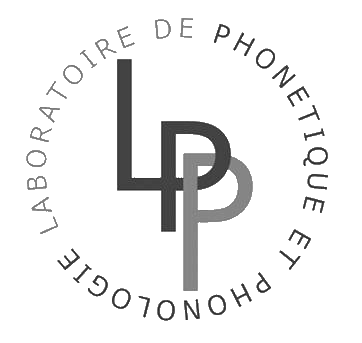DesPho APady research project
General information: DesPho APaDy (which stands for "Acoustico-Phonetic description of dysarthric speech") is a Human and Social Science project funded by the French Agency of Research on the 2009-2012 period. The DesPho APady project consortium involves three different academic partners : the LPP (Paris), the LPL (Aix-en-Provence) and the LIA (Avignon). This consortium provides an outstanding blend of competences in phonetics, clinical phonetics, clinical practice
and speech ingeneers. This multi-disciplinary collaboration brings together the expertise, technologies and approaches required to cover all the aspects of the proposed project.
Summary: One of the fundamental topics in current linguistic theory is the definition of the scope of variability in normal speech. The limits of what is to be considered "normal variation" can be determined by studying pathological variation. To do this, we need to know more about pathological speech. The aim of our project is to explore the large scope of speech variability through the description of acoustico-phonetics characteristics of dysarthric speech. Dysarthrias is a group of speech disorders resulting from neurological impairments of speech motor control. Substantial variations occur in dysarthric speech due to a deficit in the spatio-temporal execution of speech movements that affects different levels of speech production (respiratory, laryngeal and supralaryngeal). Our project aims at studying the scope of normal speech variation by characterising pathological varaition in dysarthric speech in phonetic-acoustic terms. The study will involve different types of dysarthrias through a large number of French-speaking dysarthric patients. A multidisciplinary team will bring together specialists from phonetics, phonology, clinical, speech and computer science engineering guarantee for the success of this project. The objectives are the following: (1) To identify and quantify the phonetic-acoustic characteristics of dysarthrias through an original procedure combining the potential of both manual phonetic acoustic analysis and methods of automatic speech processing (2) To assess the relevance of the criteria thus established by considering how well they are suited for distinguishing normal from dysarthric speech, for categorizing different types of dysarthrias, and for describing the longitudinal evolution of dysarthric decline; (3) To assess the robustness of the criteria considering the known constraints in normal speech in different speaking situations such as reading a sentence, telling a story based on picture interpretation, spontaneous speech. This project is somewhat held up by the fact that pathological speech recordings are widely scattered and difficult to come by. A preliminary stage of the project will therefore consist in putting in place a structured computer-based database of pathological speech. We currently have at our disposal 1,000 recordings of dysarthric patients put together by C. Chevrie-Muller between 1965 and 1997. This will be tied in with a major effort to harmonise terminologies between the different actors in clinical phonetics.
Contacts: Mailing list
Cécile Fougeron : leader for the project and local leader for the LPP
Alain Ghio : local leader for the LPL
Corinne Fredouille: local leader for the LIA

